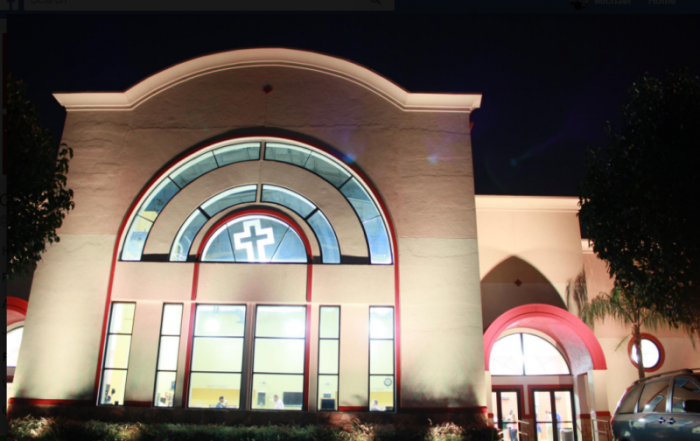Trashing Megachurches

Trashing megachurches is often popular. According to the standard stereotype, they're big exurban factories resembling car dealerships with giant parking lots and giant American flags, catering to rich, socially irresponsible SUV driving Sunbelt Republicans anxious to hear superficial, self-serving health and wealth sermons from huckster preachers in flashy suits.
A recent article by Jonathan Merritt cites a liberal advocacy group report asserting that, of the 100 largest congregations in America, none are LGBTQ affirming, over 90 percent have white pastors, and only one has a female pastor. Merritt calls this report "explosive" without directly condemning the churches. But many on social media have predictably issued their disapproving tut-tuts. The originating advocacy group wants to shame these churches.
Megachurches of course aren't generated, subsidized or regulated by government fiat or any centralized authority. They're big because they're popular, typically founded by entrepreneurial pastors who are very talented at presenting winsome messages that broadly appeal. They are almost always Evangelical and theologically more traditional.
There are thousands of churches in America with liberal clergy. They could become megachurches if their messages and appeals were compelling to more people. But they aren't. Growing religion, Christian or otherwise, in America or globally, now and across history, is almost always in some sense traditionalist. It challenges and demands with cohesive beliefs and practices. Where are the growing liberal churches, mosques, and temples around the world? They exist, if at all, in the minds of some Western theologians and sociologists. More permissive and theologically lax religion may sound appealing but it rarely attracts a sustained crowd, anywhere. (No, big crowds don't equal theological truth, but chronically dying congregations are hardly validating spiritually.)
This latest slam against megachurches implies they're racially exclusive because over 90 percent of pastors are white. Megachurches have mostly originated in mostly white suburbs and exurbs, but their congregations are more diverse than commonly imagined. A 2015 survey showed that 10 percent of megachurches reporting no racial majority, while 37 percent of megachurches reported between 20 percent and 49 percent minority presence in their majority white congregations. Megachurches also report that about 20 percent of their worshipers are between ages 18-34.
Compare those stats with "inclusive" liberal Mainline Protestant denominations, whose memberships are 88 percent to 96 percent white, excepting the American Baptist denomination, the least liberal among the seven, which is 73 percent white. Their memberships are also much older. One survey says only 12 percent of Episcopal Church members are millennials. Likely far fewer are active worshipers. One survey says the average age of a megachurch worshiper is 40. For Mainline Protestants it's close to 60.
Liberal Mainliners like to boast of LGBTQ inclusion. But I strongly conjecture the average megachurch, even though not affirming LGBTQ causes, still by virtue of its size and variety of programs has more LGBTQ people than the average mostly empty liberal church proudly waving rainbow flags to little effect.
As to female clergy, my own United Methodist denomination to which I'm committed has ordained women since the 1950s. All the liberal Mainline denominations ordain women. But the vast bulk of global Christianity doesn't, including of course Catholicism, Orthodoxy and most of global Protestantism. Much of global Pentecostalism does though women pastors are a small minority. Almost no other major global religions have female clerics, such as Islam, Hinduism, etc. Although I'm happy in my tradition, I'm loathe to condemn as intrinsically bigoted the vast majority with different teachings. If megachurches are chauvinistic and bigoted why do they more successfully attract women and non-whites than the ostensibly more enlightened liberal churches?
I've never desired to worship at a megachurch. To my own tastes they seem too choreographed and overwhelming and often too dependent on the pastor's personality. Some of the stereotypes about them have grains of truth! I prefer smaller, more traditional churches. But megachurches can reach many more with the Gospel and provide a variety of ministries that my preferred churches cannot and likely never will.
So thank you, megachurches. For some of us you're just too glitzy. But please ignore often peevish critics, and keep feeding many spiritually famished souls who otherwise might go hungry.
Orignally posted at Juicy Ecumenism.




























